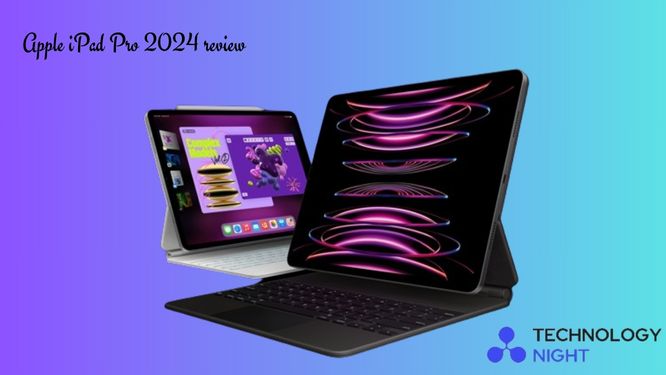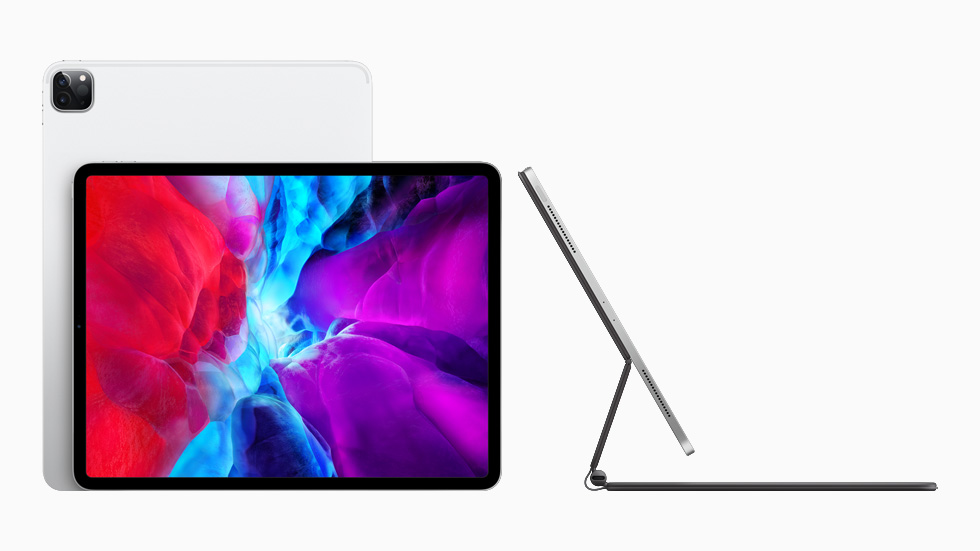
The new Apple iPad Pro is a significant achievement in tablet design.
It closely aligns with the idea that a tablet should feel like a piece of glass, rather than a traditional computer.
The device is so thin that the USB-C plug used to charge it is thicker than the iPad itself.
Although it’s lightweight, fast, and highly capable, its core issue remains the software.
Apple’s restrictive operating system has long prevented this powerful device from serving as a full-fledged computer.
iPad Pro’s perspective is that the iPad’s versatility is its primary selling point, highlighting functions like drawing on the screen and playing mobile games.
Nevertheless, versatility doesn’t always equate to excellence in every function.
Apple iPad Pro’s argument for the iPad Pro is that it’s built for the future, and equipped with the necessary hardware to handle upcoming advancements like AI.
While this foresight may prove beneficial, as of now, it’s not yet a reality.
The new Apple iPad Pro feels like the culmination of 14 years of development, but it’s still hampered by outdated software, making it hard to recommend for most people—yet it’s still a device I love.
The high-end 13-inch iPad Pro, with its extensive storage and RAM, plus cellular connectivity, costs as much as a high-end laptop when paired with the Pencil Pro and Magic Keyboard.
There’s a cheaper 11-inch model, though it’s still somewhat pricey.
Crucially, all models feature a significant upgrade in the chip, screen, and design.
The new M4 chip, designed for this iPad Pro, is significantly faster than its predecessor, enabling quicker app launches and smoother gameplay.
The chip powers the new “Ultra Retina XDR” OLED display, known for its vibrant colors and deeper blacks, though it does reflect more glare.
Design-wise, the new Apple iPad Pro is incredibly thin and light, and now has the front-facing camera in the right spot for landscape orientation.
This refined design is durable despite its thinness.
Users generally fall into two categories: those who want basic functionality, for whom the new Air or base iPad may suffice, and those who utilize specific iPad features intensively.
For these power users, upgrades like the new Pencil Pro with its squeeze gestures and the enhanced Magic Keyboard with function keys are significant, though these come at a high price.
The practicality of these accessories varies, and while they enhance the Pro’s usability for current owners, they may not attract new users.
Future advancements in AI might change the utility of the Apple iPad Pro, but for now, Apple needs to make a strong case for why this versatile yet expensive device is essential.
Table of Contents
The new Apple iPad Pro This tablet design is truly impressive.
It’s the nearest realization I’ve encountered of a tablet feeling more like a sheet of glass in your hand than a typical computer.
I genuinely can’t imagine how it could be made any slimmer; the USB-C plug I use for charging the 13-inch Pro I’m testing is already bulkier than the iPad itself.
It’s a lightweight, speedy, and extraordinary device.
Does that really hold significant value nowadays?
The iPad has been a hardware triumph for years It’s highly fast, lightweight, and durable enough to handle almost anything you need it for.
The issue, however, has always been the software By imposing a restricted, overly simplified operating system on the device, the Apple iPad Pro has hindered this highly portable and powerful machine from evolving into the fully functional computer that numerous users desire.
Apple perceives the iPad’s allure as being greater than merely the sum of its features.
While it may not perform some tasks that a MacBook can, it offers the convenience of being handheld in bed, allows for screen drawing, and enables mobile gaming.
At Apple, the term “versatility” is often highlighted as the iPad’s primary selling point, emphasizing that its ability to handle a variety of tasks is a benefit rather than a drawback.
However, the challenge with aiming to do everything is that excelling in all areas is quite difficult.
Apple argues that the iPad Pro is the device of the future.
With its advanced processor, high-quality screen, and various accessories, it’s designed to meet all your computing needs for the next decade.
As AI technology evolves and becomes more integral, having a powerful device like the iPad Pro will be crucial.
However, while this potential sounds promising, it hasn’t materialized just yet.
Furthermore, the most significant elements of this future are still to come.
on the screen, not behind it.
This latest iPad Pro seems to represent the culmination of the iPad’s 14-year journey, with all elements finally coming together.
Yet, it still resembles a device from the future hindered by outdated software, making it difficult for me to recommend to the majority of users.

Apple iPad Pro A magic pane of glass
I’ve conducted most of my testing on one of the top-tier iPad Pro models: a 13-inch space black version with 1TB of storage, 16GB of RAM, and built-in cellular connectivity.
This tablet alone costs $2,099.
When you add the $129 Pencil Pro and the new $349 Magic Keyboard, the total adds up to $2,577 — which is comparable to the price of a high-end laptop.
You can find cheaper options, although the Pro line is never really cheap: the 11-inch model starts at $999, featuring 256GB of storage and 8GB of RAM.
(It’s worth noting that the base storage option has been doubled, which is a welcomed improvement, though it remains pricey.)
Regardless of which Pro version you purchase, you will gain access to the three most significant new features of this model: the chip, the screen, and the design.
The 13-inch iPad Pro is quite large.
However, it is now significantly lighter.
Let’s start with the chip, as it’s crucial and a bit complex.
The Pro operates on the M4 processor Apple created a brand-new chip specifically for the Pro’s updated screen and design, and it delivers the speed you would expect.
In my benchmark tests, the Pro, powered by the M4 chip, scored approximately 50% higher than the previous model with the M2 chip.
In actual use, it doesn’t seem 50 percent faster, but it does feel faster.
Apps open and close slightly quicker with the M4, and even intricate games play flawlessly (I’m still amazed at how well they run).
Call of Duty: Warzone Mobile The device has a noticeably faster video rendering speed in iMovie compared to the 11-inch M2 Pro that I’ve been using for the past few years.
While these enhancements may not seem groundbreaking on their own, they can be significant if you frequently handle intensive photo and video tasks or simply enjoy long sessions of work.
Warzone During a session, there’s a noticeable boost in performance.
Throughout all my testing, I’ve never felt the device become hot to the touch.
At most, it occasionally gets a little warm, but that’s all.
The high-end Pro models, offering 1TB or 2TB of storage, feature the superior M4 chip, which includes an extra performance core in the CPU.
While this seems like a boost in power, I would be surprised if it had any noticeable impact on daily usage.
Generally, the iPad’s performance has not posed any problems for quite some time.
The primary practical function of the M4 chip is to power the latest OLED display.
Apple’s new “Tandem OLED” technology essentially combines two OLED panels to produce a sharper and brighter screen.
Apple has branded this as Ultra Retina XDR, a somewhat grandiose name, but it delivers excellent performance.
The usual benefits of OLED technology are instantly noticeable: with individual pixel control, OLEDs achieve much deeper blacks, making the letterboxes around videos blend seamlessly into the bezel, and photos appear more dynamic.
The colors are exceptionally vivid, almost to the extent of sometimes being overly intense. too It appears very high contrast and HDR-like to me.
The Pro’s maximum brightness is noticeably higher than the new Air, which is also difficult to achieve with an OLED.
The OLED display on the Pro is a significant improvement compared to anything previously seen on an iPad.
The only drawback I’ve observed with the display so far is that the OLED appears to catch a bit more glare and reflection compared to the Air’s LCD panel.
Consequently, when I’m using it outdoors, I tend to increase the brightness more than I would prefer to see everything clearly on the screen.
However, this is a minor issue; the screen looks amazing and I haven’t noticed any faster battery drain even at maximum brightness.
In terms of design, the new Pro is more about refinement than a complete overhaul, but the changes are still quite significant.
The thinness stands out — the 13-inch model is 5.1mm thick and the 11-inch is 5.3mm, making them the thinnest iPads to date. However, it’s the weight that truly impresses me.
The 13-inch Pro I’ve been testing is about a quarter of a pound lighter than last year’s version.
While that may not seem like a lot, it’s very noticeable when I’m holding this large device on the couch.
I used to think the larger iPads were too bulky to use comfortably, but I’ve found myself frequently using and holding this one.
It’s so thin and light that I worry it might be fragile, though it has proven to be quite sturdy so far.
The only significant design alteration here is that Apple has finally —placed the front-facing camera in the proper position: centered on the long side of the iPad.
This design makes the iPad a device primarily intended for landscape orientation, which is a positive change.
Overall, the Apple iPad Pro is inherently suited for landscape use.
Although the front-facing camera’s quality doesn’t leave me particularly amazed, it is adequate and now significantly more functional.
Apple appears to have made no compromises in its pursuit of a thin and light design.
From an engineering and design standpoint, it’s a total success.
Apple iPad Pro features creep
There are essentially two categories of iPad users. (This is a simplification, but bear with me.) The first group seeks an easy way to send emails, read the news, solve crosswords, view photos, and browse the internet.
For these users, the new iPad Pro is excessively powerful.
While it does offer some improvements over the new iPad Air or the now more affordable base iPad, the enhancements are not significant enough to justify the extra expense unless you are specifically craving that OLED screen.
(And if you are, believe me, I understand. I’m on your side.) As always, the main issue with the iPad is its operating system, iPadOS.
Another group of iPad users engages in all these activities, but they also value specific iPad features tailored to their needs.
For instance, musicians appreciate its ability to turn sheet music, students use it for handwriting notes, filmmakers find it handy for quickly reviewing footage, and designers use it to present interactive renders to clients.
When Apple describes the iPad Pro as “versatile,” I believe they are referring to this aspect.
Although the iPad Pro isn’t a perfect fit for everyone, it offers something for each user.
By continually enhancing the device’s capabilities, Apple aims to increase the number of features that can attract various users.
This year’s new additions primarily revolve around the Pencil Pro.
One standout is a new squeeze gesture, which is both practical and speeds up the process of accessing menus and frequently used tools.
Additionally, Apple is allowing developers to customize the squeeze action within their apps, so we can anticipate some innovative and unusual uses in the near future.
Another significant feature is the Barrel Roll, which enables artists to rotate their virtual brush or pen by twisting the Pencil while drawing.
Although it functions very well, I must admit I’m not the best person to evaluate it from an artist’s point of view.
We’ll provide more details on this aspect soon.
Similarly, the new Magic Keyboard is my top pick among this year’s upgrades.
When you attach the iPad to it, it provides a full keyboard and a trackpad, elevating the iPad in a manner that makes it most closely resemble a laptop.
The new version is more robust than its predecessor, although the iPad does still wobble slightly when you touch the screen.
The keyboard offers an excellent typing experience, comparable to that of a MacBook or the traditional Magic Keyboard.
With the addition of a row of function keys and a larger trackpad, I can work on the device for hours without needing to lift my hands.
The best part is that it’s about 50 grams lighter than the previous model (according to my kitchen scale, the new model weighs 658 grams compared to the former’s 710 grams), which helps reduce the overall size of the new Pro.
The Pro’s row of function keys significantly enhances its functionality as a laptop replacement.
When I use my iPad Pro, it rarely comes out of its keyboard case.
I rely on the Magic Keyboard for tasks like journaling, emailing, and even as a stand while cooking and watching shows.
A compact but efficient keyboard is really important to me.
However, for $299, this might not be significant for many other people.
With these accessories, Apple is making the iPad Pro more attractive to current Pro users, but not doing much to attract new customers.
It’s worth mentioning that AI has the potential to transform the game completely.
Perhaps generative AI will enhance Photos to such an extent that everyone will desire a large, stunning screen.
Maybe Siri will advance to a point where the iPad becomes an essential smart home controller. The camera software might become so exceptional that you’ll prefer using a tablet for all your video calls from now on.
With WWDC approaching in a few weeks, I anticipate Apple will make a strong case that advancements in AI elevate the iPad Pro beyond a typical iPad.
If Apple can effectively argue that a highly powerful, ultra-portable, and versatile device is what the future demands, I might find myself rushing to purchase an iPad Pro.
Currently, it’s just an iPad—arguably the best one yet, perhaps even the finest you could hope for. However, the true narrative of the iPad, often referred to by Apple as the “magic pane of glass,” revolves around its software.
For years, the software has been a letdown compared to the impressive hardware.
Apple has hinted that this will change, suggesting that this year’s WWDC might be a significant milestone for AI and iPads.
We’ll have to wait and see.
In the meantime, the iPad Pro is so advanced that it almost overshadows its own benefits.



